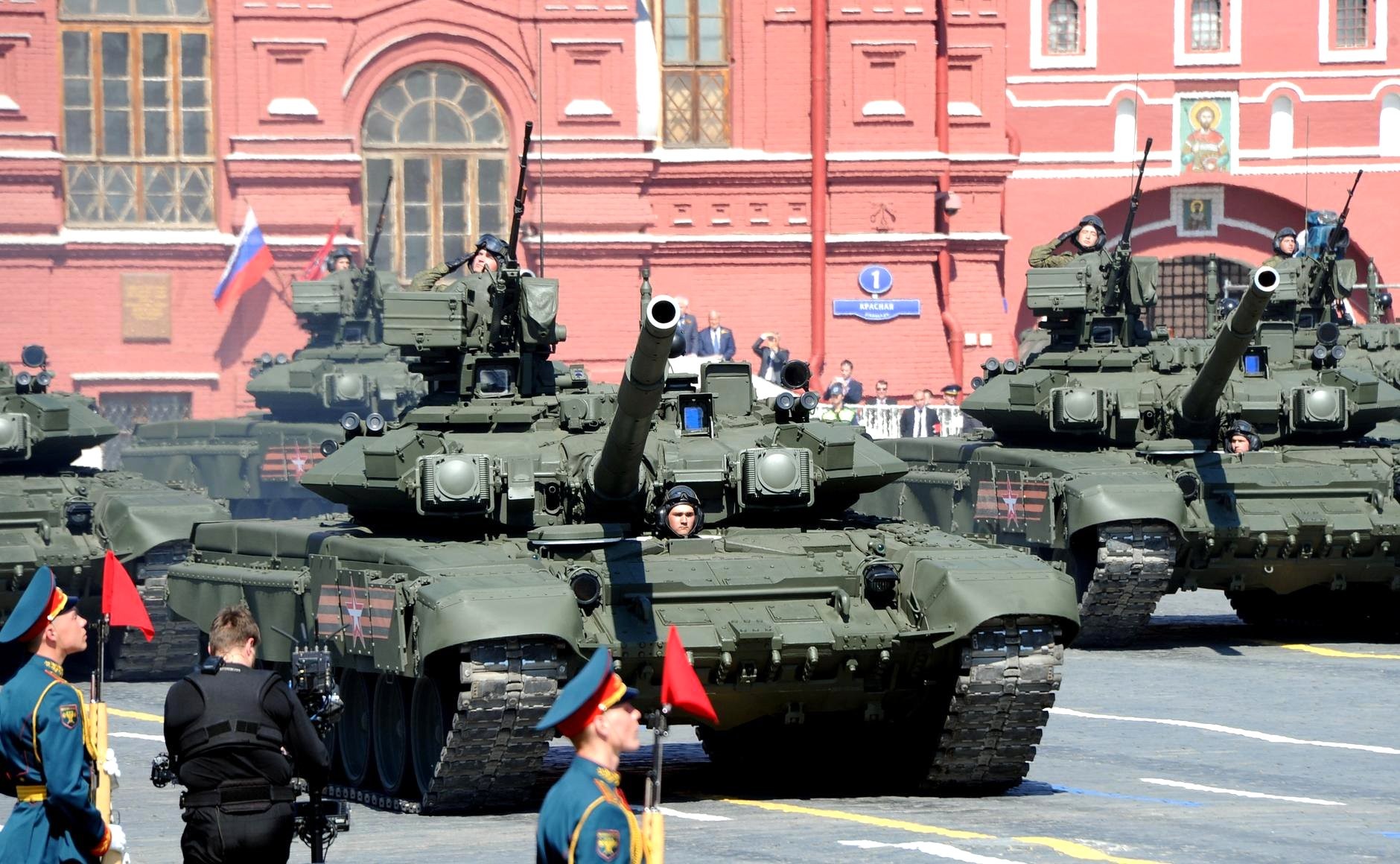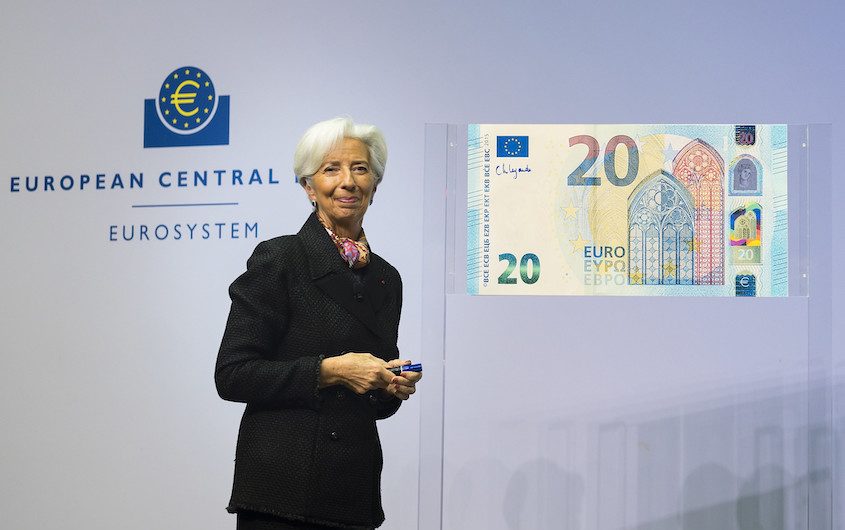Russia's Military Buildup: Why Europe Is Concerned

Table of Contents
Increased Military Spending and Modernization
Russia's significant investment in its military capabilities is a primary driver of European concern. This involves substantial budget allocations and a focus on technological advancements, creating a potent combination that destabilizes the region.
Significant Budget Allocations
Russia's defense budget has seen substantial increases in recent years. While exact figures are debated and vary depending on the source, independent analyses consistently point to a significant upward trend. This increased spending fuels the acquisition of new weapon systems, modernization of existing equipment, and the expansion of military infrastructure.
- New weapon systems: Acquisition of advanced fighter jets (Su-57), modernized tanks (T-90M Proryv), and sophisticated air defense systems (S-400).
- Modernization of existing equipment: Upgrades to existing nuclear arsenals, submarine fleets, and ballistic missile systems.
- Expansion of military infrastructure: Construction of new military bases, training facilities, and storage depots, particularly near borders with NATO countries.
These developments indicate a clear commitment to military expansion, fueling concerns about an evolving arms race in the region. The sheer scale of Russian military expenditure is a significant factor contributing to Europe's worries. Analyzing this Russian military expenditure reveals a pattern of assertive military growth.
Technological Advancements
Beyond sheer quantity, Russia's focus on developing and deploying advanced weaponry is equally alarming. This includes significant advancements in hypersonic missiles, nuclear capabilities, and cyber warfare capabilities.
- Hypersonic missiles: Development and testing of hypersonic missiles like the Avangard, capable of exceeding five times the speed of sound, pose a significant challenge to existing missile defense systems.
- Nuclear capabilities: Modernization and expansion of Russia's nuclear arsenal, including both strategic and tactical nuclear weapons, contribute to heightened tension.
- Cyber warfare capabilities: Development of sophisticated cyber warfare capabilities, used for espionage, sabotage, and disruption, pose a significant threat to critical infrastructure in Europe.
The combination of increased Russian military expenditure and advancements in Russian military technology creates a formidable challenge to European security.
Aggressive Military Posturing and Exercises
Russia's aggressive military posturing and frequent large-scale military exercises near European borders further exacerbate concerns. These actions are perceived as provocative and destabilizing, creating a climate of uncertainty and fear.
Large-Scale Military Drills
Russia conducts increasingly frequent and large-scale military exercises, often involving tens of thousands of troops and sophisticated weaponry. These drills are frequently conducted near or on the borders of NATO member states.
- Zapad exercises: These large-scale exercises, held periodically, often involve simulations of attacks on NATO countries and test the alliance's readiness.
- Location and scale: Exercises are often conducted in geographically sensitive locations, such as near the Baltic states, Ukraine, or in the Arctic, with a scale and intensity that are seen as aggressive.
- Provocative nature: The exercises often include scenarios that mimic attacks on NATO territory and involve the deployment of advanced weapons systems, further increasing concerns.
The frequency and scale of Russian military exercises are a significant source of anxiety for European nations.
Deployment of Troops and Equipment
The movement of Russian troops and military equipment near European borders has caused significant alarm. These deployments are often unpredictable and lack transparency, creating uncertainty and fueling speculation about potential military action.
- Troop movements near Ukraine: The buildup of Russian troops near the Ukrainian border in 2021-2022 is a prime example of this concerning trend, leading to international tensions.
- Military presence in Belarus: Increased Russian military presence in Belarus, including deployments of advanced weapons systems, raises concerns about potential attacks from multiple directions.
- Strategic implications: These deployments are not only strategically concerning, but also impact the psychological state of neighboring countries, raising their anxiety levels and leading to a sense of insecurity.
This Russian military presence in Europe directly threatens regional stability.
Violation of International Agreements and Treaties
Russia's disregard for key international agreements and treaties further fuels European concerns. These actions undermine the international rules-based order and demonstrate a willingness to act unilaterally, defying established norms.
Disregard for Arms Control Treaties
Russia's actions have consistently undermined key international arms control agreements. This lack of adherence to international norms is viewed as a serious threat to global security.
- INF Treaty withdrawal: Russia's withdrawal from the Intermediate-Range Nuclear Forces (INF) Treaty eliminated crucial limits on the development and deployment of intermediate-range missiles.
- New START Treaty concerns: The future of the New START Treaty, which limits nuclear weapons, is uncertain, raising concerns about a potential new arms race.
The breakdown of these agreements significantly increases the risk of military escalation and undermines efforts to maintain a stable security environment.
Aggressive Actions in Ukraine and Other Regions
Russia's military actions in Ukraine and other neighboring countries clearly violate international law and the principles of sovereignty. These actions demonstrate a willingness to use force to achieve geopolitical goals, disregarding international norms.
- Annexation of Crimea: The illegal annexation of Crimea in 2014 set a dangerous precedent, demonstrating Russia's willingness to violate territorial integrity.
- Conflict in Donbas: Russia's support for separatist groups in eastern Ukraine has led to a protracted conflict that has caused significant loss of life and instability.
These actions demonstrate Russia's willingness to disregard international norms and undermine the territorial integrity of neighboring countries.
Conclusion
Russia's ongoing military buildup presents a significant and growing challenge to European security. The combination of increased military spending, aggressive posturing, technological advancements, and disregard for international agreements has created a climate of uncertainty and apprehension. Understanding the nuances of Russia's military buildup is crucial for formulating effective responses and mitigating potential future conflicts. Staying informed about the latest developments in Russia's military buildup is vital for understanding the evolving geopolitical landscape. Continue to research and follow reputable news sources to stay updated on this critical issue.

Featured Posts
-
 Czy Porsche Cayenne Gts Coupe Spelnia Oczekiwania Szczegolowa Opinia
Apr 29, 2025
Czy Porsche Cayenne Gts Coupe Spelnia Oczekiwania Szczegolowa Opinia
Apr 29, 2025 -
 You Tubes Growing Appeal To Older Viewers Nostalgia And Accessibility
Apr 29, 2025
You Tubes Growing Appeal To Older Viewers Nostalgia And Accessibility
Apr 29, 2025 -
 Confronting Google A Perplexity Ceo Interview On The Ai Browser Battle
Apr 29, 2025
Confronting Google A Perplexity Ceo Interview On The Ai Browser Battle
Apr 29, 2025 -
 How To Buy Capital Summertime Ball 2025 Tickets Now
Apr 29, 2025
How To Buy Capital Summertime Ball 2025 Tickets Now
Apr 29, 2025 -
 European Central Bank Highlights Fiscal Supports Role In Inflation
Apr 29, 2025
European Central Bank Highlights Fiscal Supports Role In Inflation
Apr 29, 2025
Latest Posts
-
 Ru Pauls Drag Race Live Celebrates 1 000th Show With Live Broadcast
Apr 30, 2025
Ru Pauls Drag Race Live Celebrates 1 000th Show With Live Broadcast
Apr 30, 2025 -
 Untucked Ru Pauls Drag Race Season 17 Episode 8 Free Online Guide To Legal Streaming
Apr 30, 2025
Untucked Ru Pauls Drag Race Season 17 Episode 8 Free Online Guide To Legal Streaming
Apr 30, 2025 -
 Ru Pauls Drag Race Season 17 Episode 9 Analyzing The Design Challenge
Apr 30, 2025
Ru Pauls Drag Race Season 17 Episode 9 Analyzing The Design Challenge
Apr 30, 2025 -
 Find Untucked Ru Pauls Drag Race Season 17 Episode 8 Free Online Best Streaming Sites
Apr 30, 2025
Find Untucked Ru Pauls Drag Race Season 17 Episode 8 Free Online Best Streaming Sites
Apr 30, 2025 -
 Untucked Ru Pauls Drag Race Season 17 Episode 6 Free Streaming Links
Apr 30, 2025
Untucked Ru Pauls Drag Race Season 17 Episode 6 Free Streaming Links
Apr 30, 2025
